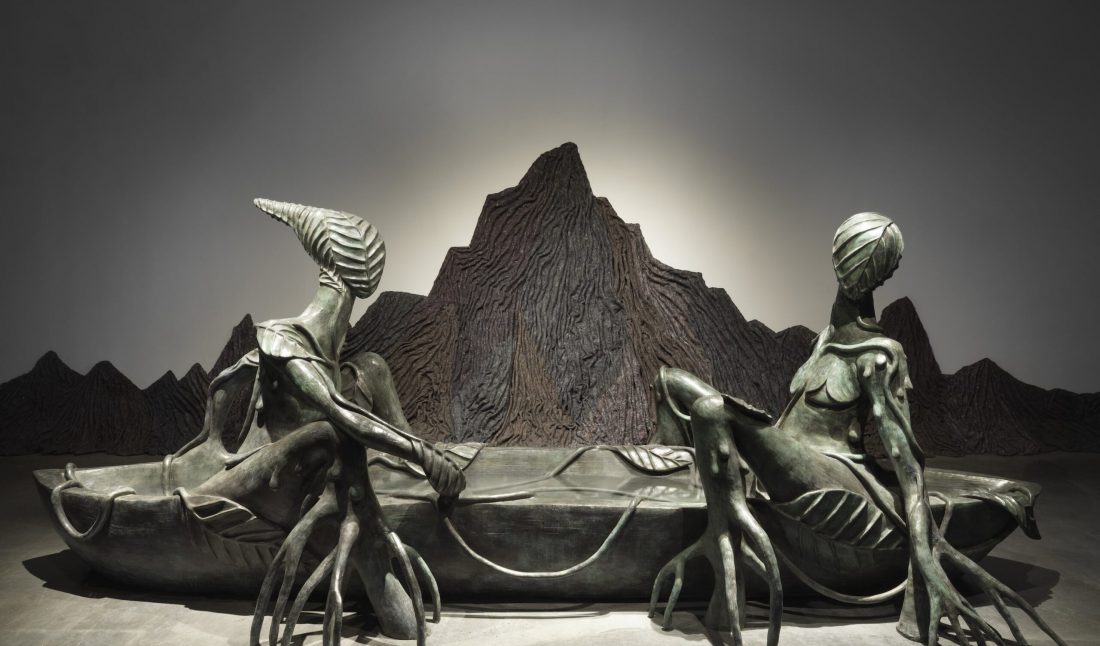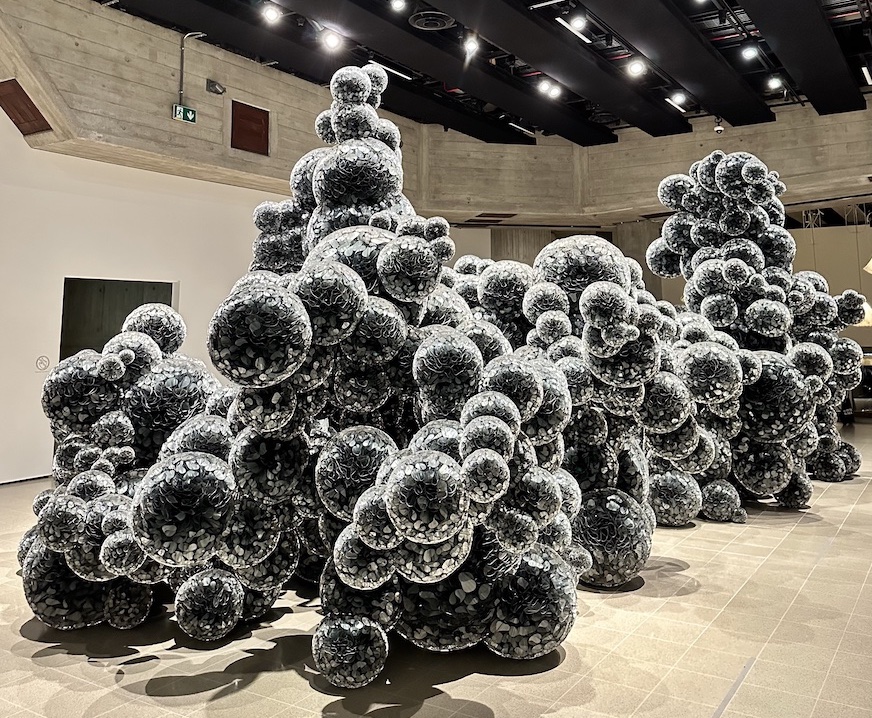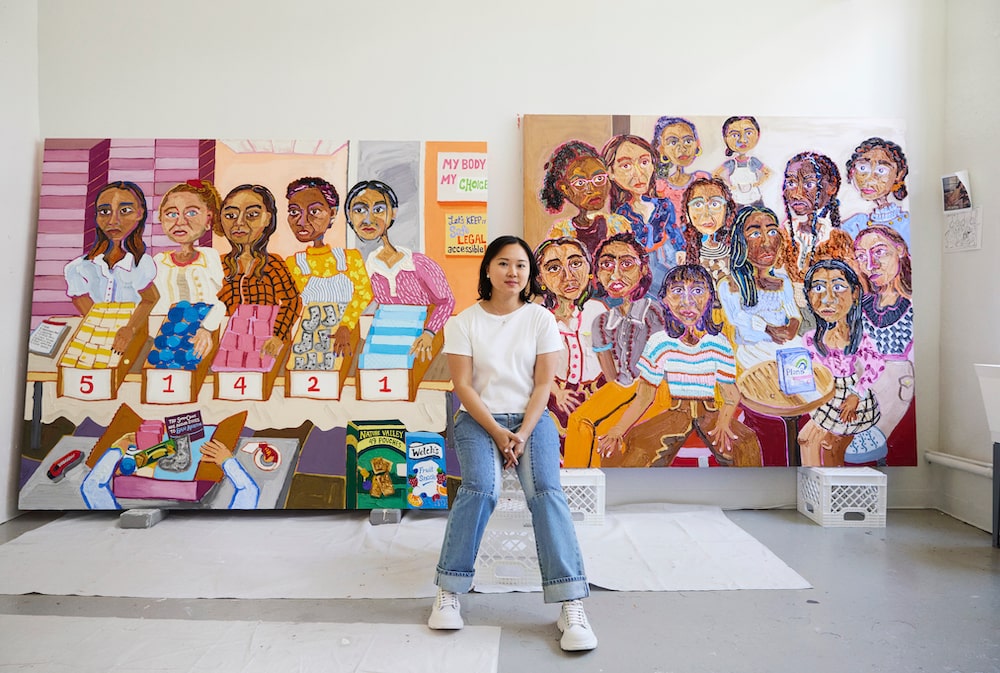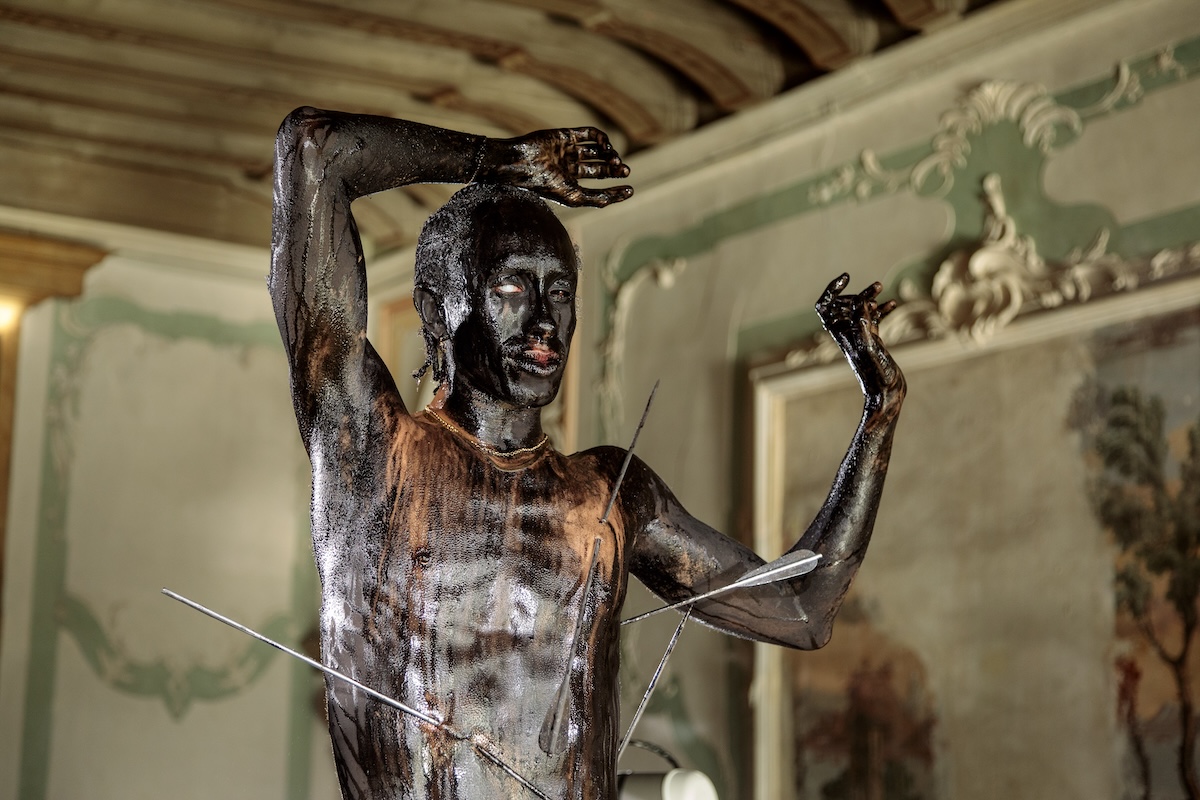On March 2 in New York, the New Museum unveiled the most expansive survey to date of the Kenyan artist Wangechi Mutu titled “Intertwined.” On view through June 4, the exhibition features work spanning Mutu’s practice from the mid-1990s to today with paintings, drawings, sculptures, and film. Organized by Curator Vivian Crockett with the help of the Allen and Lola Goldring Senior Curator, Margot Norton, and Curatorial Assistant Ian Wallace, it occupies the museum’s three main floors, even including a specially-commissioned vinyl installation on the building’s glass façade, titled Sick Planets.
 Wangechi Mutu, 2021, photo by Cynthia Edorh.
Wangechi Mutu, 2021, photo by Cynthia Edorh.
Through a comprehensive display of Mutu’s varied oeuvre—one that has yielded a thought-provoking signature of spirit-like figures in fantastic scenarios—viewers may also recognize in her work recurring themes relating to colonialism, globalization, the African diaspora, and historical violence against women. “Mutu’s work has long been characterized by a sense of permeable boundaries and hybridity, invested in the complex encounters of bodies, sites, and structures,” said Crockett. “Her work grapples with contemporary realities and proffers new models for a radically changed future informed by feminism, Afrofuturism, and interspecies symbiosis.”
Mutu’s other-worldly works—from recent sculptures of great proportions to rarely-seen works like her earliest multimedia collages—captivate her audience with visuals that are at once whimsical and eerie. While derived from human forms, Mutu’s spectral subjects are often depicted with plant, animal, or even machine-like features. Her two-dimensional works exist in a world not quite like our own, where these figures can be seen existing in surreal environments with wispy grass, floating mushrooms, and threads of matter connecting them like tentacles. Meanwhile, her sculptures include further explorations of this universe alongside curious forms derived from plant and animal matter, like a suite of globe-shaped forms fashioned after the cells of viruses like Zika and the common cold.
“Mutu’s work presciently addresses some of today’s most vital questions concerning historical violence and its impact on women, and our inextricable ties to one another, our ecosystems, and all life forms with which we share our planet,” said Norton.
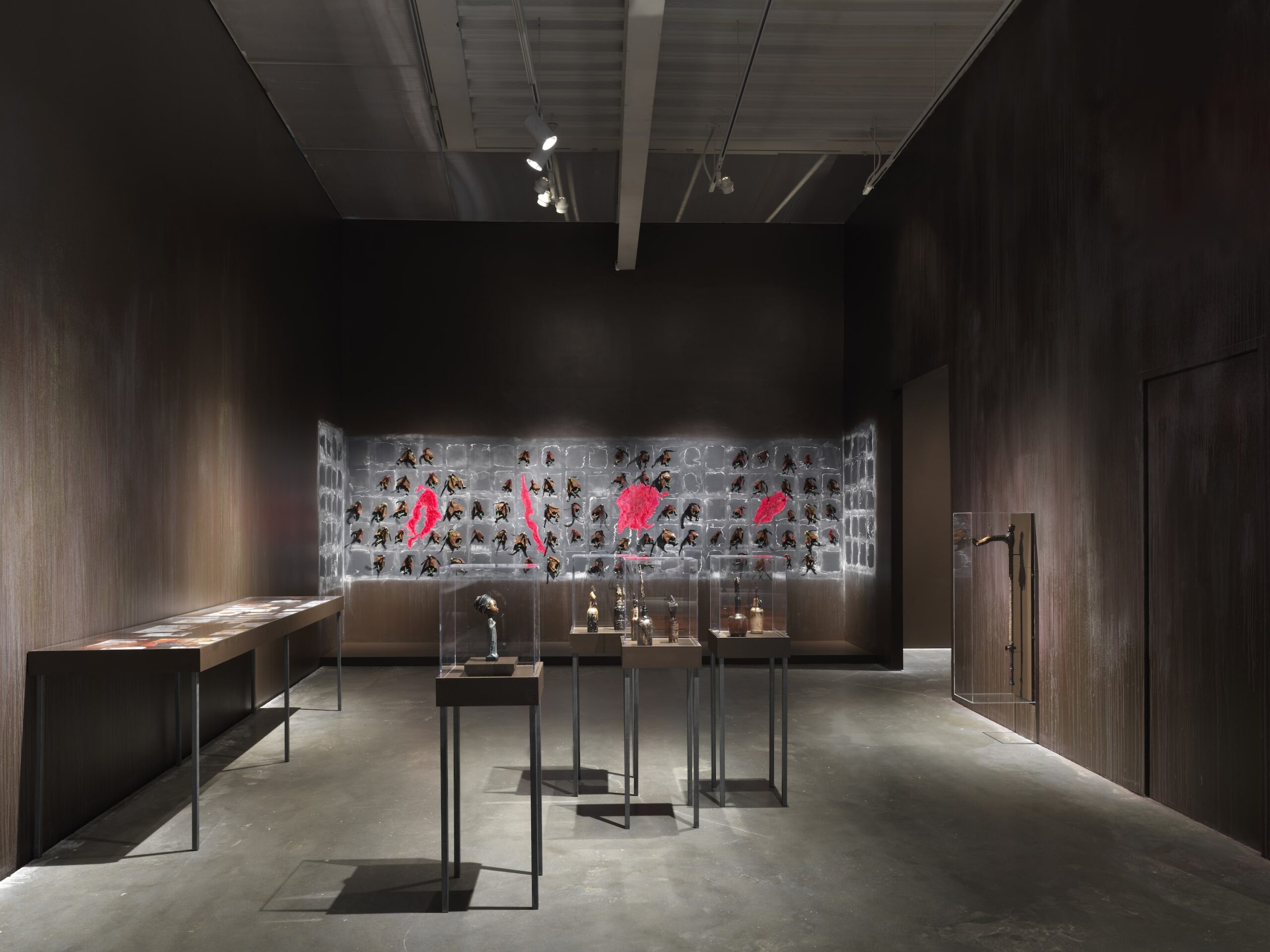 “Wangechi Mutu: Intertwined,” 2023, exhibition view, photo by Dario Lasagni, courtesy of New Museum.
“Wangechi Mutu: Intertwined,” 2023, exhibition view, photo by Dario Lasagni, courtesy of New Museum.
A pair of bronze leafy figures making up In Two Canoe greet visitors in the lobby within a site-specific installation. On the second floor are examples of the artist’s collages and sculptures, like the New Museum’s 2003 commission by the artist, Yo Mama (a pink sky diptych where a feminine figure is seen in the moments after beheading a white serpent) and a suite of experimental collages employing elements like mica flakes, sequins, pressure-respondent film, and ink. On the third floor, sculptures, collages, and videos (like the single-channel Cleaning Earth and a mixed media object titled Poems by my Great Grandmother I)coexist, highlighting Mutu’s favor of natural materials—like the inclusion of soil, quartz, wood, and pulp, which can often be found in her sculptural objects and incorporated into collages and works on paper.
On the fourth floor are works from the artist’s “Subterranea” collage series from 2021-2022 (like a breathtaking figure that appears to be mid-transformation, titled Subterranea Holy Cow)and recent large-scale sculptures made in bronze—like a slithering creature emerging from a basket tiled Musa and a human figure merged onto the back of a giant reptile called Crocodylus, which features expertly-molded divots that look like musculature.
 Wangechi Mutu, “Yo Mama,” 2003. Ink, mica flakes, acrylic, pressure-sensitive film, cut-and-
pasted printed paper, and painted paper on paper, diptych, overall 59 1/8 × 85 inches; The Museum of Modern Art, New York, The Judith Rothschild Foundation Contemporary
Drawings Collection Gift, 2005; photo by Robert Edemeyer, courtesy of the artist and Vielmetter Los Angeles.
Wangechi Mutu, “Yo Mama,” 2003. Ink, mica flakes, acrylic, pressure-sensitive film, cut-and-
pasted printed paper, and painted paper on paper, diptych, overall 59 1/8 × 85 inches; The Museum of Modern Art, New York, The Judith Rothschild Foundation Contemporary
Drawings Collection Gift, 2005; photo by Robert Edemeyer, courtesy of the artist and Vielmetter Los Angeles.
Another aspect touched upon in the show is how Mutu’s practice has been influenced by past institutional commissions. Several examples illustrating this aspect include the aforementioned In Two Canoe, which was presented at Storm King Art Center in 2021, a mixed media collage on mylar paper titled Hide ‘n’ Seek, Kill or Speak for The Studio Museum in Harlem, and a commission for the Metropolitan Museum of Art, where she imagined a series of seated bronze sculptures in 2019 (The Seated I, II, III, and IV)that could be seen filling the niches outside of the building made specifically for this purpose.
Accompanying the exhibition, visitors at the New Museum will find a fully illustrated catalog, which was co-published with Phaidon, featuring words by the likes of Yvonne Adhiambo Owuor, Tina Campt, and Maureen Mahon.Viewers should also look out for an interview of the artist with curators Crockett and Norton and an artist roundtable, which will feature Firelei Báez, Kandis Williams, and Kiyan Williams, moderated by Nana Adusei-Poku.
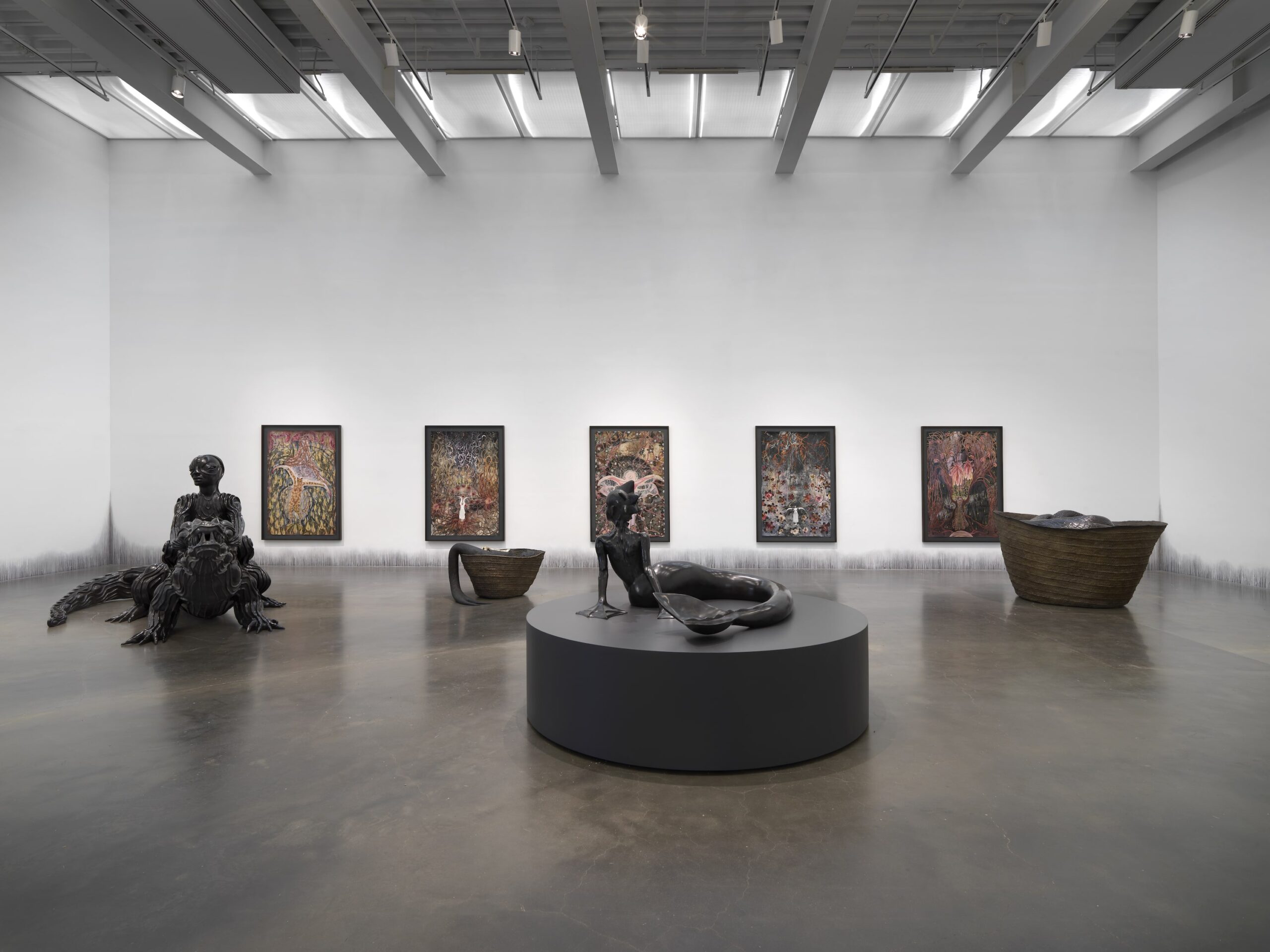 “Wangechi Mutu: Intertwined,” 2023, exhibition view, photo by Dario Lasagni, courtesy of New Museum.
“Wangechi Mutu: Intertwined,” 2023, exhibition view, photo by Dario Lasagni, courtesy of New Museum.
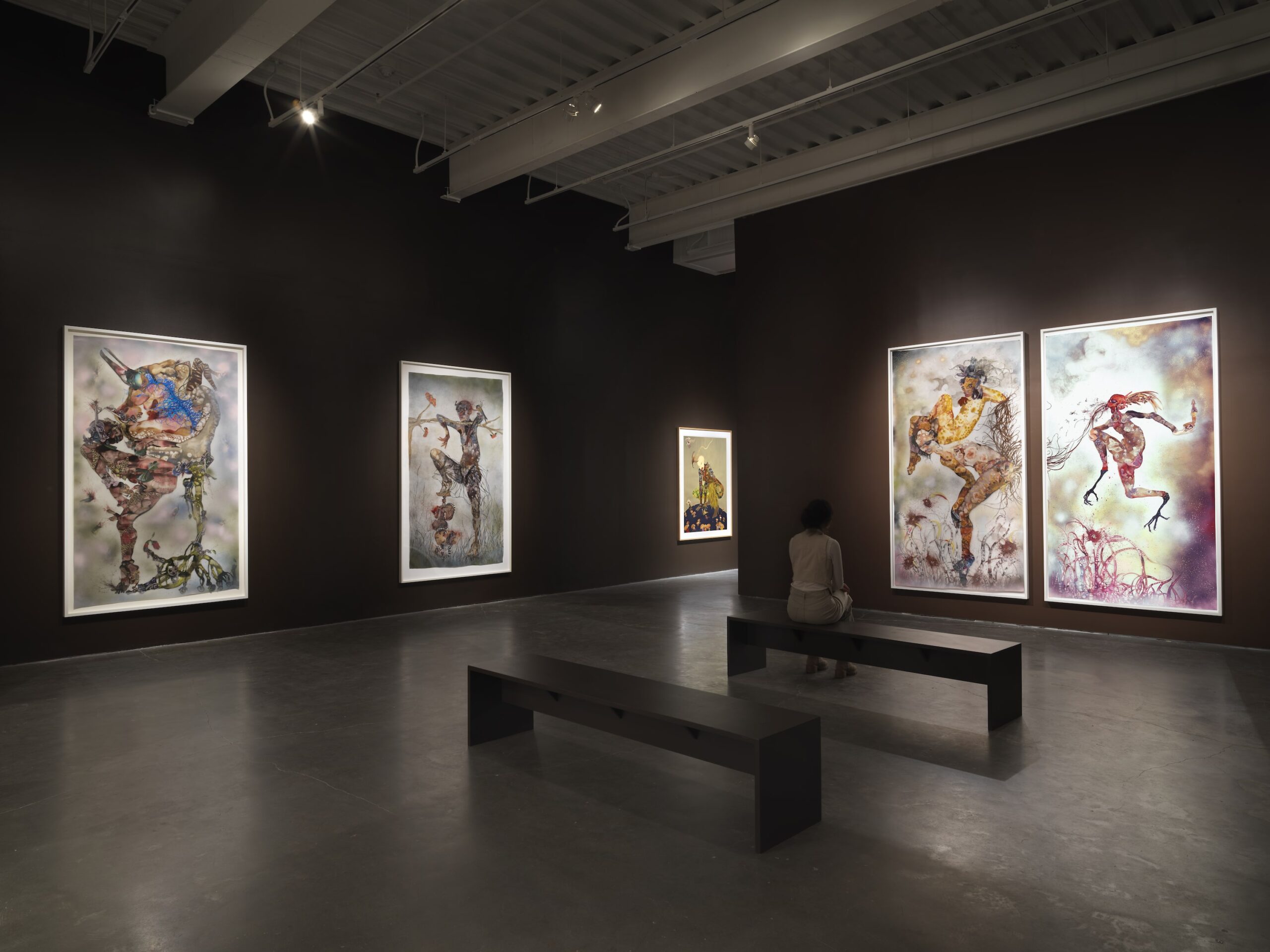 “Wangechi Mutu: Intertwined,” 2023, exhibition view, photo by Dario Lasagni, courtesy of New Museum.
“Wangechi Mutu: Intertwined,” 2023, exhibition view, photo by Dario Lasagni, courtesy of New Museum.
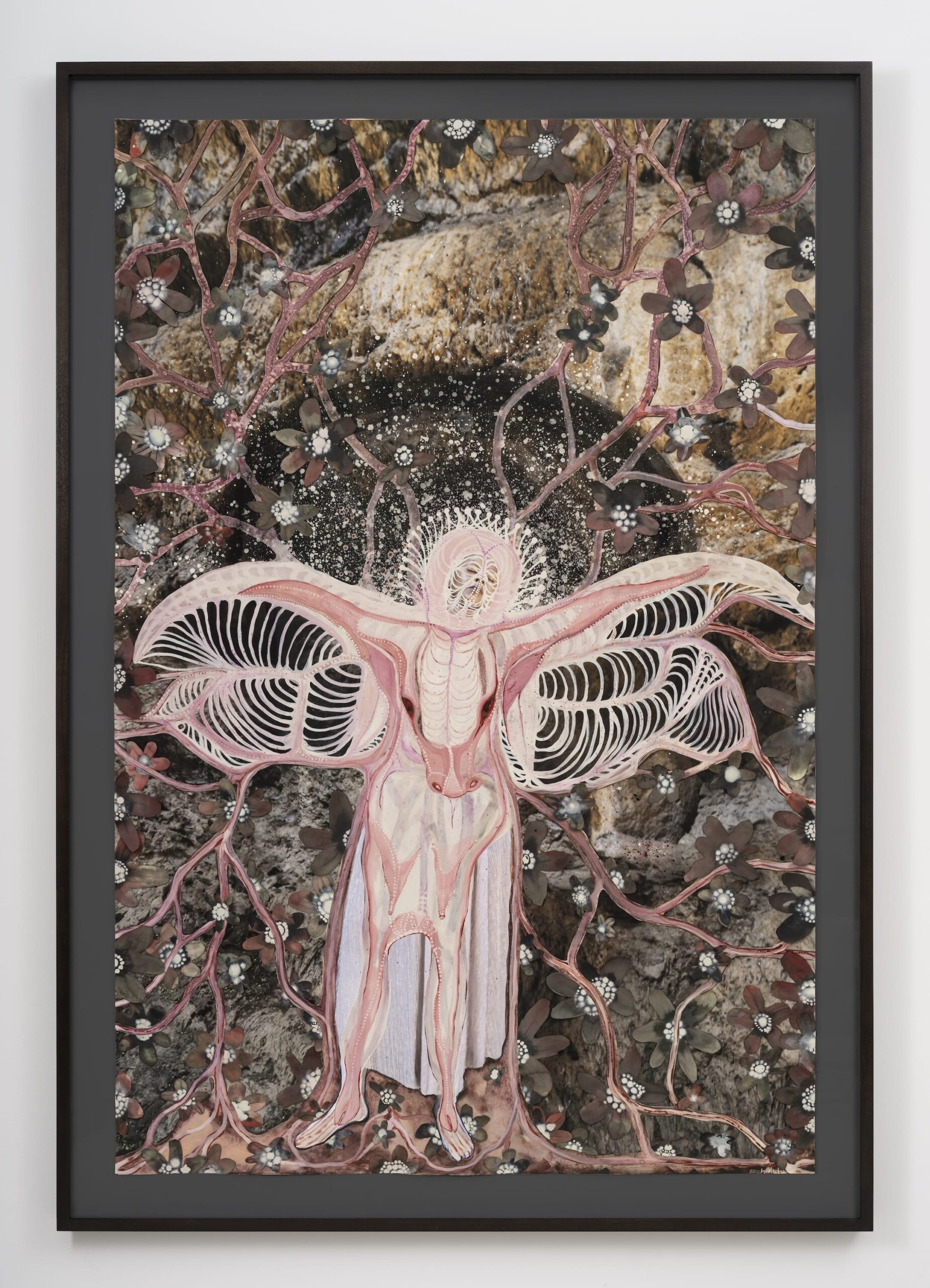 Wangechi Mutu, “Subterranea Holy Cow,” 2022, Ink, emulsion paint, and watercolor paper on photographic print, 72 3⁄4 × 47 7/8 inches; Private Collection, San Francisco, California, courtesy of the artist.
Wangechi Mutu, “Subterranea Holy Cow,” 2022, Ink, emulsion paint, and watercolor paper on photographic print, 72 3⁄4 × 47 7/8 inches; Private Collection, San Francisco, California, courtesy of the artist.
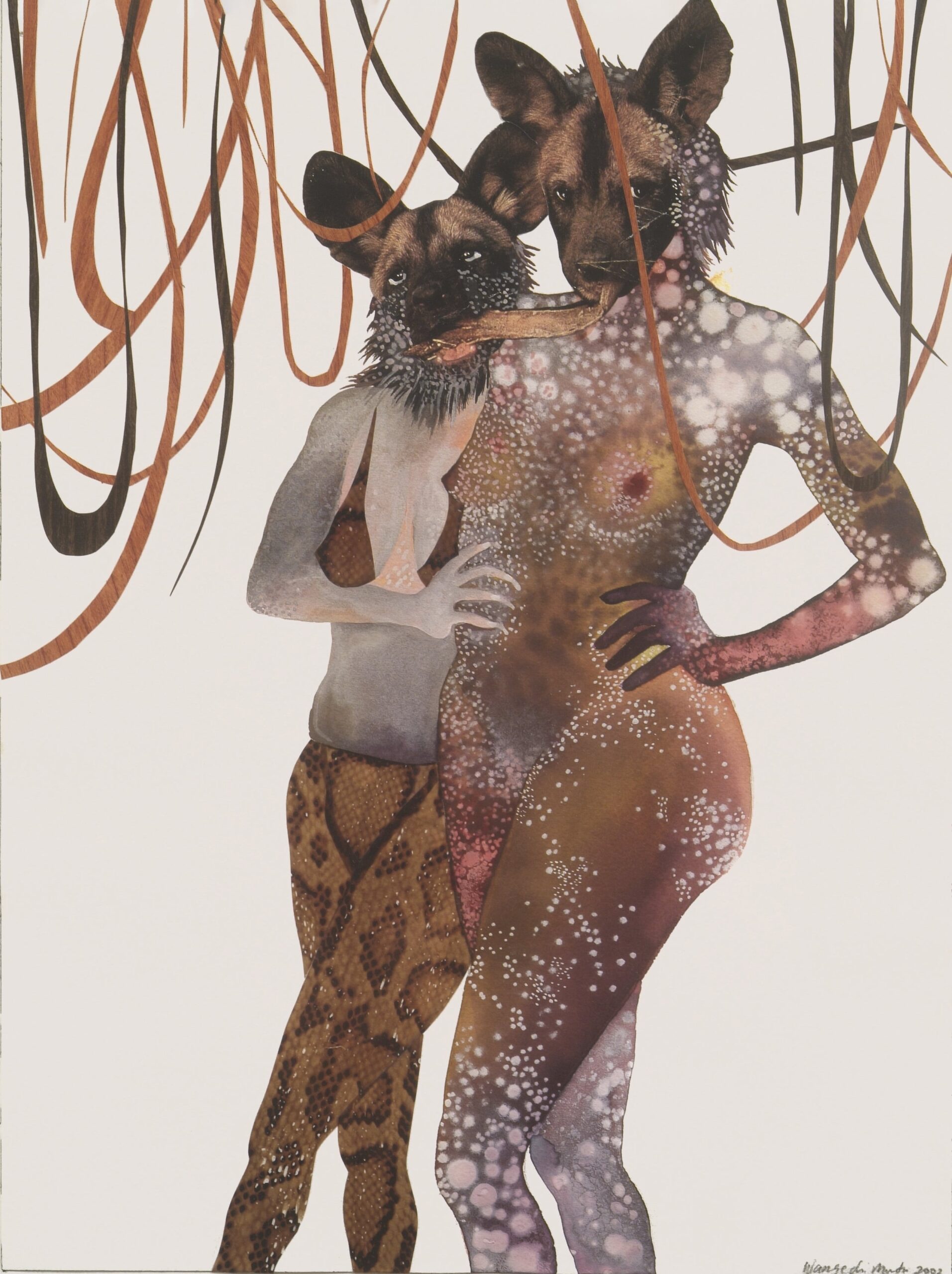 Wangechi Mutu, “Intertwined,” 2003, Watercolor with collage on paper, 16 1/8 × 12 1/8 inches (image), 22 3⁄4 × 18 13/16 × 1 1⁄2 inches (outer frame); Minneapolis Institute of Art, Gift of Mary and Bob Mersky; photo by Robert Wedemeyer, courtesy of the artist and Vielmetter
Los Angeles.
Wangechi Mutu, “Intertwined,” 2003, Watercolor with collage on paper, 16 1/8 × 12 1/8 inches (image), 22 3⁄4 × 18 13/16 × 1 1⁄2 inches (outer frame); Minneapolis Institute of Art, Gift of Mary and Bob Mersky; photo by Robert Wedemeyer, courtesy of the artist and Vielmetter
Los Angeles.






